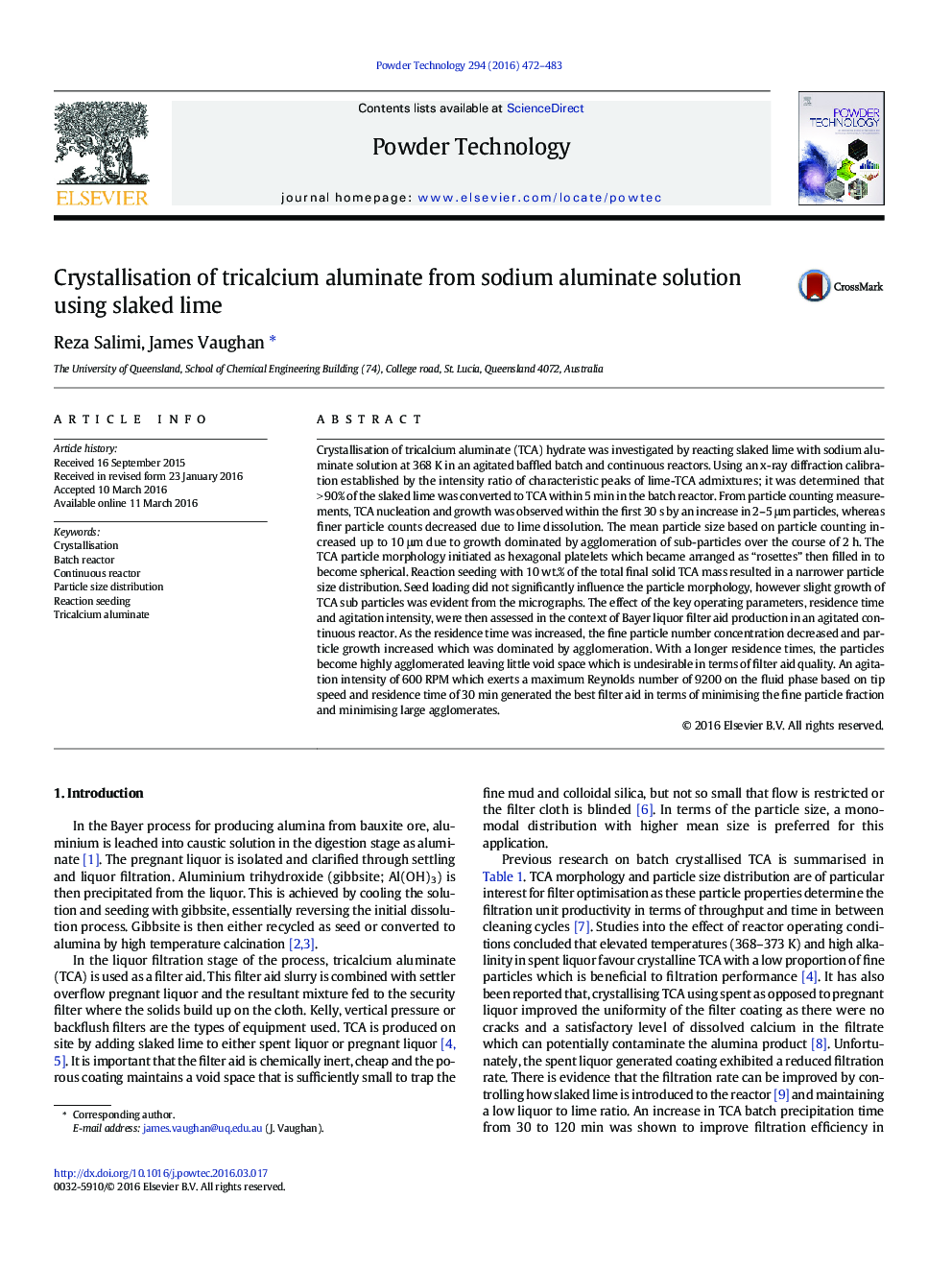| کد مقاله | کد نشریه | سال انتشار | مقاله انگلیسی | نسخه تمام متن |
|---|---|---|---|---|
| 235089 | 465627 | 2016 | 12 صفحه PDF | دانلود رایگان |
• TCA crystallisation from sodium aluminate solution studied using slaked lime at 368 K
• Fast lime dissolution and TCA nucleation characterised by quantitative XRD and particle counting
• Particle evolution established for key operating conditions in batch and continuous reactors
• Results are discussed in the context of application as a Bayer process filter aid.
Crystallisation of tricalcium aluminate (TCA) hydrate was investigated by reacting slaked lime with sodium aluminate solution at 368 K in an agitated baffled batch and continuous reactors. Using an x-ray diffraction calibration established by the intensity ratio of characteristic peaks of lime-TCA admixtures; it was determined that > 90% of the slaked lime was converted to TCA within 5 min in the batch reactor. From particle counting measurements, TCA nucleation and growth was observed within the first 30 s by an increase in 2–5 μm particles, whereas finer particle counts decreased due to lime dissolution. The mean particle size based on particle counting increased up to 10 μm due to growth dominated by agglomeration of sub-particles over the course of 2 h. The TCA particle morphology initiated as hexagonal platelets which became arranged as “rosettes” then filled in to become spherical. Reaction seeding with 10 wt.% of the total final solid TCA mass resulted in a narrower particle size distribution. Seed loading did not significantly influence the particle morphology, however slight growth of TCA sub particles was evident from the micrographs. The effect of the key operating parameters, residence time and agitation intensity, were then assessed in the context of Bayer liquor filter aid production in an agitated continuous reactor. As the residence time was increased, the fine particle number concentration decreased and particle growth increased which was dominated by agglomeration. With a longer residence times, the particles become highly agglomerated leaving little void space which is undesirable in terms of filter aid quality. An agitation intensity of 600 RPM which exerts a maximum Reynolds number of 9200 on the fluid phase based on tip speed and residence time of 30 min generated the best filter aid in terms of minimising the fine particle fraction and minimising large agglomerates.
Figure optionsDownload as PowerPoint slide
Journal: Powder Technology - Volume 294, June 2016, Pages 472–483
